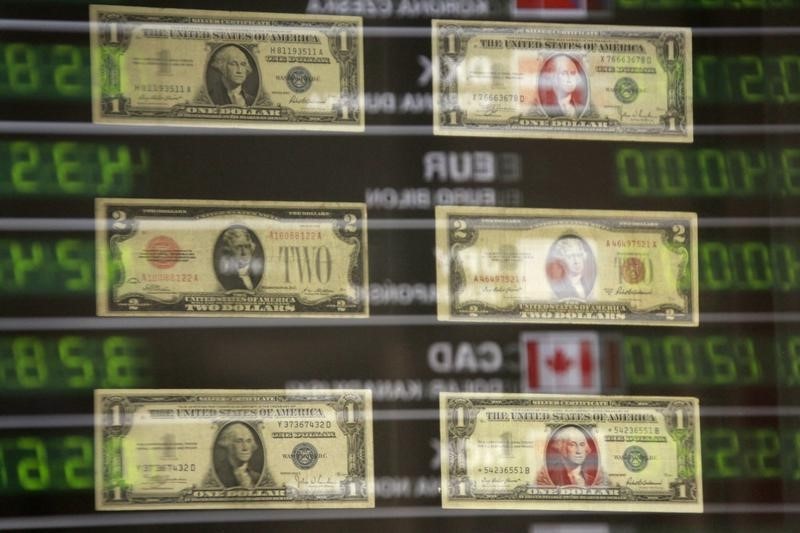(Adds analyst comments and details on stock markets, updates prices)
* Canadian dollar at C$1.3123, or 76.20 U.S. cents
* Bond prices higher across flatter maturity curve
* Ten-year yield touches lowest since July 14 at 1.001 percent
TORONTO, Aug 9 (Reuters) - The Canadian dollar strengthened against its U.S. counterpart on Tuesday as increased risk appetite offset a dip in oil prices and recent weak domestic data.
The Nasdaq composite stock index .IXIC closed at a record high while other major stock indexes hovered near recent all-time highs in a session with thin trading volume. pick-up in risk appetite has helped support commodity-linked currencies, including the Canadian dollar, said Amo Sahota, director at Klarity FX.
The Canadian dollar CAD=D4 ended at C$1.3123 to the greenback, or 76.20 U.S. cents, stronger than Monday's close of C$1.3163, or 75.97 U.S. cents.
The currency's strongest level of the session was C$1.3110, while its weakest was C$1.3190.
On Friday, the loonie touched a nine-day low at C$1.3200 after a slump in domestic jobs and a record-wide trade deficit contrasted with a robust U.S. jobs report. is surprising that the Canadian dollar has not since lost further ground, said Sahota, who added that the market's attention has turned to the short-term news cycle after the currency failed to break out of its recent trading pattern.
U.S. crude oil futures CLc1 settled 25 cents lower at $42.77 a barrel as worries about a stubborn global petroleum glut offset forecasts for a weekly drop in U.S. crude inventories. O/R
Canadian housing starts fell in July from June, as construction of multiple units, typically condos, fell 13.3 percent after an unexpectedly large gain in June, data from the national housing agency showed on Tuesday. government bond prices were higher across a flatter maturity curve. The two-year CA2YT=RR bond edged up 0.5 of a Canadian cent to yield 0.508 percent and the benchmark 10-year CA10YT=RR climbed 46 Canadian cents to yield 1.017 percent.
The 10-year yield touched its lowest since July 14 at 1.001 percent. It fell 1.5 basis points farther below the yield on its U.S. equivalent, leaving the spread at -53.6 basis points, its largest gap since June 2, as Canadian government bonds outperformed.
